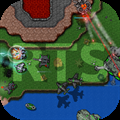
Quick Links
- Why Were Deathclaws Created?
- Deathclaw Behavior
- Deathclaw Variants
Deathclaws are one of the most classic creatures in the Fallout franchise. Originally designed to be a cross between a wolverine and a bear, the developers of Fallout opted for a more reptilian look, adding horns and scales and giving them their iconic look so many associate with the Wasteland.
RelatedEvery Name Codsworth Can Say In Fallout 4
You're more than just a sole survivor; you have a name, and Codsworth may be able to call you by it.
PostsTough, deadly, and swift, the deathclaw has learned to maneuver its habitat, effectively making itself one of the most fatal encounters for early-game wanderers, with postwar America being littered with various limbs and environmental storytelling, warning the player of unfortunate brushes with the beast. But where did the deathclaw come from, and what exactly is a deathclaw?
Why Were Deathclaws Created?
The United States military originally constructed deathclaws as a means to replace human soldiers for search-and-destroy missions.
With this in mind, they were designed to have heightened smell and sight, genetically engineered to have higher mental capacity than other experiments at the time.
Though other breeds of animal would be added to the deathclaw's genealogy to maximize their combative capability, the Jackson's chameleon would remain the primary source of DNA, lending to their scaly, uncanny appearance.
How Do Deathclaws Attack?
Carnivorous, large, and strong, the deathclaw was designed to be bipedal. While in their upright form, deathclaws are often lumbering and slow, though they could (and frequently do) revert to base instincts, dropping to all fours to charge their prey.
Relying on the weight of their body, deathclaws make heavy, bone-crushing attacks on their quarry, ripping them apart with their jagged claws after smashing them into the ground.
Their heightened intelligence made the deathclaw ripe for experiments by the Enclave, with a pack reaching levels of sentience only formerly achieved by the human race. Upon discovery, however, the Enclave would exterminate the pack.
Deathclaws have two curling horns on their head and spines along their body, improving their defense and making close combat extraordinarily lethal for the average Wastelander.
As such, explosives can be used to incapacitate their legs, eliminating their speed.
Deathclaw Behavior
When the bombs dropped, deathclaws were able to escape from the enclosures they were held in. They quickly spread across the newly minted Wasteland, forming packs.
A single male and female will act as the alphas of a pack, and the "pack mother" will lay multiple clutches of eggs. Their procreative habits vastly increased their numbers, coupled with how difficult they had become to kill.
With their durability, aggressive breeding habits, and lethal combat style, deathclaws initially developed a reputation in the Wasteland tantamount to ghosts, with many communities believing they were little more than postwar folklore.
However,as their number increased, human settlements would come into contact with these creatures,leading to deadly encounters across the nation.
Deathclaws may nest underground occasionally, springing out to crush or eviscerate their prey, a tactic more common in Fallout 76 than in previous games.
While deathclaws tended not to seek out human communities, they quickly proved to be capable of eliminating them when their territories overlapped.
It seemed that no amount of preparation could equip Wastelanders for an encounter. Even highly-trained units, such as the Brotherhood of Steel, were known to never return after venturing into deathclaw territory.
Deathclaw Variants
As with any species, deathclaws have mutatedand evolved over time, whether naturally or via the radiation they come into contact with.
Deathclaws
There are a couple of deathclaws that can be classified by their stages of life: baby deathclaws, young deathclaws, and regular deathclaws.
The younger ones have coloration differences, appearing morepale than brown.
Under this branch, one will also get alpha deathclaws, who have matured and hardened themselves into running packs.
An alpha that has survived longer than that may be called a legendary deathclaw. They tend to be darker than brown and pair with mother deathclaws, which take on a bluer tone and function similarly.
Some deathclaws were either born without sight or blinded in the Wasteland. Sneaking is relatively useless around blind deathclaws, as they've trained their other senses to compensate.
Other deathclaws may be labeled 'Enclave Deathclaws,' when referring to deathclaws that have an implant on their head. This mechanical implant serves as a means to control them.
Albino Deathclaws
These deathclaws reacted to FEV by losing all pigmentation in their skin. However, the FEV also granted them a higher intelligence, making them more resilient.
Glowing Deathclaws
Exposed to heavy amounts of radiation, these deathclaws mirror glowing ones, becoming bioluminescent. They deal radiation damage, using it to whittle down their prey's defenses.
Gatorclaws
Gatorclaws are deathclaws with alligator DNA, bred as another experiment postwar. They are ferocious and aggressive, even by deathclaw standards. They can come in albino variants as well.
NextFallout New Vegas: Every Way To Get Into The Strip
There are actually several ways to enter the Strip in Fallout: New Vegas. We'll explain how to get through each and every one of them.
Posts












